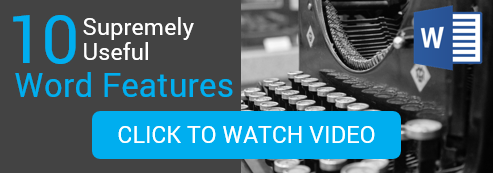 Chances are if you've used a computer in a work setting, you've probably used the Microsoft Word application. While some may use it for simple word processing alone, others take advantage of the whole breadth of the software, including some handy tools that can help organize what you've created on the page.
Chances are if you've used a computer in a work setting, you've probably used the Microsoft Word application. While some may use it for simple word processing alone, others take advantage of the whole breadth of the software, including some handy tools that can help organize what you've created on the page.
No matter the extent to which you are using the program, videos can help you learn how to bring polish to internal and external communications. After all, in today's world of emojis, abbreviations and text-speak, you want to stand out so others take you seriously as an authority. We gathered a few of the tools that can help you accomplish this and provided you with some targeted videos below.
Let's look at some Word tools that can create more effective business communication.
Automate organization and boost the usability of a document with dynamic tables of contents.
Consider human resources as an example. Undoubtedly, HR professionals will have to produce larger documents for their employees, such as a memorandum of internal policies or compliance-regulation materials. While this is required reading for a new employee, it's also meant to serve as a reference guide for the future. So, make it easy for readers to find what they need quickly via the table of contents feature.
The most convenient part of this feature is that once you set it up properly, the table updates itself automatically so you don't have to adjust the page numbers throughout each draft. Also, you can easily add hyperlinks to each chapter or section so that your readers can find what they need quickly. Watch the video above to see how!
Add polish to communications with headers and footers.
Headers and footers provide you with big-picture context on each page. As identifiers that run throughout the top and bottom of your document, they let the reader know important information such as the page number, title, author, chapter number and date. This way, readers can easily reference your work and can flip forward to know how much more they have to read on a given topic. And if you're compiling a particularly research-heavy external communication, why not add citations to let recipients know where they can find more information?
And these are just a few of many communication-polishing tools you can find within Word. If you woul like to learn more great game changers in Word check out our video that has been downloaded over 1 million times "10 Supremely Useful Word Features!"







